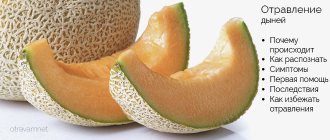Do you throw away food immediately after the expiration date? Take your time. Most people think that such products may be harmful to health. With proper storage, this is not always the case!
To know if food is edible or not, smell and evaluate its appearance. After all, many products are well preserved even after their expiration date. Don't be wasteful and don't throw away good food.
- White or fruit yogurt It can be eaten up to a week after the expiration date if it has been kept sealed in the refrigerator. There will only be fewer enzymes in it, the rest will be the same. It is clear that when opened there should not be any changes in appearance, taste or smell. But, if you don't trust expired yogurt, use it for dessert, where it will be cooked. For example, you can bake something with it - pancakes, muffins, waffles or donuts. All this is ideal for breakfast.
- Canned Food Peeled tomatoes, canned tuna, mackerel, peas, beans, corn and many other canned foods that everyone has around the house can be consumed even after one year from the expiration date if you keep them in a cool, dry place. Cans must be in perfect condition with no dents or bulges. Bacteria should not enter the jar during storage because they are what spoil the canned food. Of course, such food must be thermally processed. That is, from such canned food you can make soup, pasta sauce, add to stir-fries, etc.
- Chocolate If you are greedy for chocolate, you have no problem preserving it. But, if you are a moderate chocolate consumer, then you should know that it lasts for about two years. Its taste will simply be less intense. But, it will still be ideal for making sweets. For example, this chocolate can be used to make pudding, cake or muffins.
- Rice, pasta Rice and pasta can be used within one year after the expiration date. It is important to keep them in packaging or closed glass jars.
- Vacuum-dried products (lyophilisates) Coffee, purees, soups, tea, etc. These products can be safely consumed up to 1 year after the expiration date as long as the package is sealed. If it is opened, it is best not to exceed one month after the expiration date.
- Cheese The shelf life of cheese depends on the type. Hard cheeses are usually stored for up to 10-12 months. For example, Parmesan wrapped in breathable fabric can be stored in the refrigerator for a year or more. Soft cheeses last for 10 days. Before eating, you should always check to see if they have turned yellow. Fresh cheeses such as mozzarella or ricotta, if they are expired but still of good quality, can be used in cooking - lasagna, pizza, casseroles and pies.
- Eggs Fresh eggs keep in the refrigerator for 21 days. Around this date, eggs can be eaten cooked. And for mayonnaise or tiramisu, you should always use only the freshest eggs. To check the suitability of an egg, there is an infallible test that consists of immersing the egg in a glass of water. If it stays at the bottom, the egg is fresh, but if it floats to the top, it should be discarded. Hard-boiled eggs can be stored in the refrigerator for a week.
- Sterilized milk The long shelf life of milk can be safely extended up to 1 month after the expiration date, of course, if the can or box has not been opened. This milk is good for making cakes, custards and puddings.
- Cookies They can be eaten without problems after the expiration date if the package or box was tightly closed during storage.
- Frozen foods They can be eaten even several months after the date indicated on the package. If frozen food is prepared by you, it is best to write the dates on the bags.
All these tips apply to quality products manufactured to high European standards, and in no case to counterfeits of unknown origin.
No one wants to eat spoiled food and put their family in danger.
We are used to looking at the expiration date of food to understand when it should be thrown away.
However, many of us are confused and do not understand what the dates on food packages actually mean.
To understand everything, you first need to know how to decipher the labels on packages and understand when a product is safe for consumption and when you can get rid of it.
Firstly, dates on products help you know how long a product can be stored on store shelves, and this depends on many factors.
For example, whether the product is properly refrigerated or will be frozen, stored in a dark room, or exposed to external factors. It also depends on how well it will keep after being purchased from the store.
In other words, the labeling on the packaging does not indicate whether the product is safe for consumption.
In fact, these dates are needed so that sellers know when to remove goods from store shelves or are used for advertising purposes so that people buy certain products more often.
Shelf life and shelf life
When a product says “sell by date,” those dates are for sellers only and not for buyers. They tell stores how long they should keep products on shelves and are not related to the expiration date of the products.
The sell-by date does not indicate the time at which a product will begin to spoil or become unsafe for consumption. But it does give clues to how long it will last at home if stored properly. If a product is still on the shelves and has not been sold, the store must remove it from the shelves.
The shelf life is different from the sell-by date and indicates the degree of freshness, but not the expiration date.
In most cases, this date is set by tasters in a laboratory, who determine that the product tasted best before a certain date.
This also has nothing to do with the safety of the product, but rather with how long it can be stored without losing its properties. For example, sour cream may become slightly sour after a certain date.
These dates can serve as an indication of when the product is approaching its expiration date. This means you should pay attention to indicators that the product may be going bad, such as smell or color. Often these dates are approximate and several days before the product becomes inedible.
Perhaps we should get rid of dates on packages altogether, and instead print on them instructions on how to properly store food and how to tell if it has gone bad.
So how long can you store these foods?
Diagnostics
If there are characteristic signs, consult a doctor. The doctor will collect anamnesis and prescribe a diagnosis. A general blood test is required to determine the concentration of leukocytes, eosinophils, and erythrocyte sedimentation rate.
A general urine test is needed, which shows the absence/presence of protein breakdown products. Biochemical research can reveal indicators of ALT, AST, alkaline phosphatase.
Ultrasound is recommended as an instrumental examination. If the method is not informative, CT or MRI is prescribed.
Expiring products
The expiration date on a milk carton does not always indicate the date it will go bad. Usually the date is given because it is influenced by many factors. It loses vitamins or takes on an unpleasant taste when exposed to light, which is why it is often sold in cardboard or opaque plastic packaging.
If pasteurized milk is stored at 2-3 degrees Celsius, it will remain fresh for 2-5 days after the expiration date.
Use smell when deciding whether milk is safe to drink. If you notice a sour smell or taste, or it has turned a blue-green color, it's time to throw it away.
Fresh meat should be eaten within 1-2 days after purchase. Home refrigerators are generally not cold enough to keep meat fresh for more than 2 days.
If the meat has darkened or turned green, become slippery, sticky or dry, this also indicates spoilage, just like a sour smell.
But if you freeze meat, it will be stored much longer: frozen minced meat - up to 3 months, pork - up to 6 months, beef and chicken - up to 9-12 months.
Hard cheeses tend to age for a long time, and therefore this product does not always spoil after the expiration date.
Cheese such as Parmesan can be stored for up to 4 weeks after the expiration date, and even if there is a small mold on it, it can be cut off and transferred to a new package, as there may be some mold left on the old one.
The bread may go stale, but it can be eaten for some time after the expiration date.
If the bread has a sour or unpleasant smell or mold is visible, then of course you should not eat it. Frozen bread will also keep much longer than at room temperature or in the refrigerator.
Useful tips
When providing first aid to a person poisoned by russula, you need to know that:
- You cannot stop diarrhea and use antidiarrheal drugs. This reaction of the body is normal and indicates the activation of the body’s defense mechanisms against the toxins affecting it. Antidiarrheal drugs will only increase poisoning and worsen the patient's condition.
- You should not induce vomiting in unconscious people. If a person has “passed out,” he should be laid on his side and ensure that he does not choke and that the vomit freely leaves the gastrointestinal tract.
- For the first couple of days, it is advisable to refuse food and not put additional stress on the digestive system, which has suffered severe “stress.” She needs time to recover and return to normal work.
- It is necessary to give up alcoholic beverages, which cause increased intoxication and blurred main symptoms.
Expired shelf life
This is another dairy product that can be consumed after the expiration date. An open jar of yogurt will spoil faster than a closed one, so in an airtight container it can last 1-2 weeks after the date recommended on the package.
Pay attention to the smell and presence of mold in the yogurt, and if everything is fine, it is safe to eat.
Chips may also become stale after the expiration date, but they may be quite safe to eat.
Since this product is subject to intensive processing, it can be stored for quite a long time. If the package was opened, the chips will be fine for several more weeks, and if closed, then for several months.
Have you ever noticed a white coating on a chocolate bar? This is not mold, but what is called "chocolate bloom", and is associated with fat or sugar content, but is safe to consume.
If you store chocolate in a cool place below 20 degrees Celsius, it will outlive its expiration date.
Many seasonings have a long shelf life due to their high sugar and salt content. Here's how long these seasonings last after opening:
Ketchup can be stored for about a month in the kitchen cupboard and 6-8 months in the refrigerator.
Mayonnaise 2 months in the refrigerator
Jams and confitures for about 1 year in the refrigerator
Mustard – 6-8 months in the refrigerator
Salad dressing - 3 months in the refrigerator
Most eggs stay fresh for about a month after the expiration date if stored in the refrigerator.
If you're not sure, there's an easy way to check if your eggs are spoiled.
Place them in a glass of water: if the egg sinks to the bottom, it is suitable for consumption, but if it floats, it should be thrown away.
Harmful substances for growing and preparing chicken for sale
In the meat industry, the goal is to increase the muscle mass of animals, accelerate their growth, and achieve the maximum shelf life of meat products. To do this, the birds are fed hormones, antibiotics, and GMO feed.
Chicken poisoning can be caused by excess substances used in the meat industry:
- Arsenic is used on some poultry farms to increase the weight of chickens and protect them from parasites.
- Carbon monoxide - used to process chicken meat to extend its shelf life; toxic to humans.
The following substances do not have a toxic effect, but are carcinogenic: sodium benzoate (in combination with ascorbic acid), nitrites, nitrates.
Therefore, to enrich the diet of children and people with weakened immune systems, it is recommended to purchase home-grown chicken.
After expiration date
10. Butter
If butter has an expiration date on it, it can be stored for about a month after the expiration date if stored properly at around 4 degrees Celsius.
Spoiled oil may have an unpleasant odor, be too soft or too hard.
11. Frozen foods
Frozen foods can be eaten after the expiration date.
With the exception of frozen meat, most foods can be stored in the freezer for months or even years without risk of them spoiling.
Some frozen foods may have spots on them due to the food being poorly packaged. It is safe to eat, but the taste may not be as good.
Many manufacturers claim that canned food does not spoil for two years, while experts recommend storing them at a temperature no higher than 23 degrees Celsius and no longer than 12 months. However, the likelihood that canned food will spoil after a year is quite low.
Once you have opened canned food, you should eat it within 2-7 days depending on the product. For example, canned fish is only good for two days after opening, while canned fruit can last a week. Store opened canned goods in the refrigerator and follow safety precautions.
13. Pasta
Although pasta often has a shelf life of about 1-2 years, it can be stored much longer since this product does not contain water.
Keep them in a cool, dry place and the pasta will last for several years. If the pasta has a strange smell or has gone stale, you can throw it away.
14. Breakfast cereals
Again, this product is highly processed. Although the flavor of breakfast cereal may change, if stored properly in a cool, dry place, it can last up to 6 months after the expiration date.
Carbonated drinks contain a lot of chemicals, so their shelf life is much longer. It is believed that soda can be drunk 4-9 months after the date indicated on the packaging.
How to poison chickens
Poultry poisoning occurs when feeding low-quality feed or containing toxic substances. Protein poisoning occurs when there is an excess of protein in the diet. Their consequences are disturbances in general metabolism and growth inhibition.
Fat poisoning can be caused by feed containing non-saponifiable fat fractions. Usually they affect young birds (adult birds are more resistant) at the age of 2-6 weeks. In this case, shortness of breath, impaired coordination of movements, and general depression are observed. Such a bird has ruffled feathers, and is sluggish and inactive.
Of the plant materials that are poisonous to poultry, ergot, cockle, smut, etc. Poisoning can also be caused by highly salted feed (fish, meat products, sauerkraut, pickles, etc.).
Poisoning by toxins from mold fungi (aflatoxicosis) is especially dangerous, so grain, grass meal, mixed feed, cakes, and bran that have been stored for a long time, especially with high humidity, should not be fed to chickens.
Poultry poisoning can also be caused by chemicals used in the processing of grain, premises, various medications and disinfectants used incorrectly and in high doses, as well as heavy metals (lead, mercury, etc.) found in the feed.
Signs of poultry poisoning (general): extreme thirst, diarrhea, convulsions, paralysis, lethargy, inactivity, drooping wings, ruffled feathers, clouding of the cornea, general depression. The main thing in the prevention of various poisonings is the exclusion from the diet of poor quality and poisonous feed.
Poisoning of animal feed by poisons.
Possibly when feeding rotting meat and fish. Signs of poisoning: diarrhea, sometimes with blood, depression, drooping wings, ruffled plumage. An autopsy reveals hemorrhage in the internal organs, degeneration of the liver and heart muscles.
For treatment, a 0.1% aqueous solution of potassium permanganate is used instead of water. A decoction of flaxseed is given internally.
Potassium nitrate poisoning of poultry.
The active principle of this mineral plant food is nitric acid compounds. Clinical signs of poisoning manifest themselves in the bird's anxiety, which is replaced by depression. The comb and earrings turn blue, breathing becomes faster and more difficult. A disorder of the digestive tract appears, and paralysis of the legs is possible. Death occurs from suffocation.
What foods can be eaten that are expired?
What foods can be eaten that are expired?
In principle, there are products of long-term strategic use, which, although they have a nominal shelf life, can be stored for quite a long time.
And even after the shelf life has expired, they can be eaten. Of course, these are canned foods such as stew, condensed milk, some canned fish in oil, sealed pasta, sugar, honey, dry biscuits, biscuits, salt, tea, coffee, instant soups and others.
I think that you can immediately throw meat and fish products, eggs, and dairy products that have not been preserved and have a short shelf life into the trash. The same products include sausages, fruits and vegetables that have begun to spoil, as well as canned vegetables.
I asked a girl I knew who was involved in supplying food and drinks to enterprises about what products can be eaten that have expired.
Their company supplied expired products at discounted prices. Moreover, the expiration date has already completely expired! Naturally, no one in the company supplying food and drinks wanted to sit and answer before the law for poisoned office employees. But they didn’t want to lose profits either. I was frankly told that the expiration date on the packaging is a conditional date. This does not mean that the next day the product is already spoiled and cannot be used. It’s just that until the specified date, the supplier is responsible for freshness and compliance with standards, and after that, he declines responsibility. At the same time, the product can remain of high quality for quite a long time, unless, of course, the storage conditions are deliberately violated. There is a category of products with bifidobacteria that live for several hours. After the lifespan of the bacteria, such a product is simply useless, but, again, not dangerous.
The same goes for medications. For example, expensive drugs that have expired are written off in hospitals and staff willingly take them home. (I once received such a gift from doctor friends.) As for products, the most faithful helpers in determining freshness are our senses, smell, touch and vision. However, it is better not to experiment with medications.
I asked a girl I knew who was involved in supplying food and drinks to enterprises about what products can be eaten that have expired.
Such different kvass: store-bought, barrel, keg and homemade
The main advantage of a homemade drink is that we ourselves know how and what it was prepared from. If all storage conditions are observed, such a drink is guaranteed not to cause any harm. At the end we get an unfiltered and unpasteurized product that has retained all the substances beneficial to our body.
Bottled store-bought kvass is almost always pasteurized, that is, the bulk of the microflora in it has died.
An alternative to bottled kvass can be draft kvass . But unfortunately, in modern times, the production technology, the quality of the ingredients used, the shelf life and storage conditions of such a drink remain a mystery. Many people do not ask such questions, but in vain.
The seller of barrel kvass must have documents for the products that the buyer can review. There is no point in remembering your youth, when you could buy kvass everywhere and no one was poisoned by it: in Soviet times, long lines lined up for the drink, and the contents of the barrels were emptied, barely having time to warm up under the rays of the sun. Now, when there is a huge variety of drinks in the store, such a barrel can remain full for hours, while the liquid in it quickly deteriorates.
Keg kvass is also dangerous , which is due to the thermal conductivity of the container: it does not hold the desired temperature for long. Before replacing an expired drink with a fresh one, the seals are removed from the kegs at the factory to process the containers, after which kvass is poured into them and sealed. But the reality is that customers are often offered kvass from uncleaned and moldy containers. The advantage is the speed of sale of kvass: a popular outlet easily sells out a 50-liter keg in a day, which means keg kvass will most likely be fresher than barrel kvass.
When purchasing, you can check the documents and date of manufacture of the drink from the seller:
- Kvass should not be stored in a barrel for more than 2 days,
- in keg, no more than 3 days.
Thus, of all types of kvass, home-made and store-bought drinks are the safest (subject to compliance with production technologies and sales standards).
Is it possible to eat expired rice?
Found a pack of expired rice in your strategic food supplies? Your case is not unique, every housewife sooner or later encounters cereals whose expiration date has expired before they were consumed for their intended purpose. Is it possible to eat them without harm to health and how can they be dangerous for the human body?
The average shelf life of rice is 13 – 15 months, the exact figure is always indicated on the product packaging. Before consuming expired cereal, it should be carefully inspected and sniffed; if its properties remain unchanged, the product can be thoroughly rinsed with hot water and boiled. However, this rule applies only to a slight excess of the expiration date.
Expired rice is rarely the cause of food poisoning, however, this does not mean that it should be eaten. The thing is that over time, the taste of the cereal changes, it becomes rancid or sour, and therefore it is not possible to enjoy it.
In addition, rice that has been sitting for a long shelf life ceases to be useful, since it simply does not contain vitamins and microelements. It is also quite common to come across the opinion that cereals, after the expiration date, accumulate various toxins and fungi, which can affect health in an extremely negative way.
How many calories are there in 100 g of buckwheat? As much as 313 kcal. There is a lot of protein in porridge, at least...
In any season, as soon as good weather appears, there is a desire to go into nature and please…
In many recipes for pies, pancakes, muffins and pies, kefir is a mandatory ingredient. So, for example...
Found a pack of expired rice in your strategic food supplies? Your case is not unique, every housewife sooner or later encounters cereals whose expiration date has expired before they were consumed for their intended purpose. Is it possible to eat them without harm to health and how can they be dangerous for the human body?
Symptoms
Russula poisoning is accompanied by the following symptoms:
- Nausea.
- Vomiting.
- Diarrhea.
- Pain in the stomach.
- Dizziness.
- Severe headache.
- Increasing temperature.
- Cold sweat.
- Cramps in the legs.
- Weakness.
- Impaired consciousness.
The severity of poisoning depends on many factors: the amount of food eaten, the presence of diseases of the digestive system, and body weight.
Symptoms from burning russula can be much more serious and slightly different from intoxication with other foods:
- burning on the tongue and palate;
- dry mouth;
- a feeling of bitterness in the mouth;
- pain in the stomach;
- heaviness in the stomach;
- excessive salivation;
- severe vomiting;
- diarrhea;
- weakness throughout the body;
- dizziness;
- convulsions;
- hallucinations.
Many mushroom pickers and mushroom lovers are interested in, if russula poisoning occurs, how long does it take for symptoms to appear? The first signs of intoxication are observed within the first 60 minutes after eating them.
Is this chocolate edible?
High-quality chocolate, which is made from crushed cocoa beans, cocoa butter, sugar or powder and dairy products, can be stored for a very long time.
If we are talking exclusively about this defect, the chocolate can be eaten, but only within 6 months after the expiration date. And we are talking about bitter, dark, milk (but not white!) chocolate without fillers. If the product contains fruit fillings, candied fruits, cookie crumbs, caramel, nuts, raisins, this product should be immediately thrown into the trash.
If chocolate has an unpleasant odor or taste of spoiled oil, mold, or bitterness, such chocolate should not be eaten.
First aid for poisoning
The speed of the patient’s recovery directly depends on the first aid provided in case of poisoning. Failure to act in this case can lead to serious consequences.
First aid stages:
- Force vomiting. The patient should drink about a liter of water with a small amount of salt or a weak solution of potassium permanganate, and then press on the root of the tongue. To cleanse the digestive organs of toxins, this procedure must be repeated several times. Young children cannot cleanse their bodies of harmful substances in this way.
- In between cleansing the stomach, the patient must take any sorbent: activated carbon or Enterosgel.
- In the absence of diarrhea, it is advisable to drink any laxative - the intestines also need to be cleansed of toxins.
- With frequent vomiting and diarrhea, the victim experiences dehydration - dehydration of the body. To normalize the water and electrolyte balance, it is recommended to drink Regidron.
With timely assistance, the patient's condition should improve within a few hours. If this does not happen, you must seek medical help.
The benefits of beef liver for pregnant and lactating mothers
However, from the 16th week of pregnancy, beef liver is recommended in the diet of the expectant mother.
1. Protects skin from stretch marks and cellulite, hair from loss, bones and teeth from fragility;
2. Increases hemoglobin, improves blood composition, which is beneficial for the circulatory and nervous systems of the unborn child.
3. Folic acid, which is part of the liver, is necessary for the oxygen supply of the baby in the womb;
4. Relieves toxicosis, because normalizes the functioning of the liver and kidneys.
5. Vitamins and minerals will serve as reliable building materials for all organs and tissues of the unborn child.
The norm for consumption of beef liver during pregnancy from the second trimester is 100 g. in Week.
If beef liver is consumed with caution during pregnancy, then during breastfeeding it is vital. This product is useful for mother and baby from the first days after birth.
The high protein content contributes to the baby’s strong skeleton and the development of the musculoskeletal system.
Vitamins will strengthen the child’s immunity and increase his resistance to infections. Potassium, fluorine, phosphorus will protect the baby’s nervous system and promote the growth of brain cells.
Beef liver will fill breast milk with nutrients and saturated fats. The baby will be well-fed and calm, and will latch well.
How to cook liver properly
The natural taste of liver is bitter and has a characteristic hue. You can get rid of it by soaking the product in milk (2 hours).
The peculiarity of the structure is such that during the cooking process moisture is lost, the liver becomes hard, but after that it perfectly absorbs fat, which affects the preparation of delicate pates and fillings from mixed products. To preserve more nutrients during frying, it is recommended to salt the liver at the end of cooking.
The benefits of beef liver for human health are invaluable, and with skillful preparation it also turns into an incredibly tasty product that is highly valued even by gourmets.
Today, beef liver is a healthy, common and popular offal that won’t surprise anyone.
But two hundred years ago, beef liver was considered a noble delicacy.
Only recognized chefs were trusted to cook it, who kept the recipes for this dish in the strictest confidence and passed it down from generation to generation.











